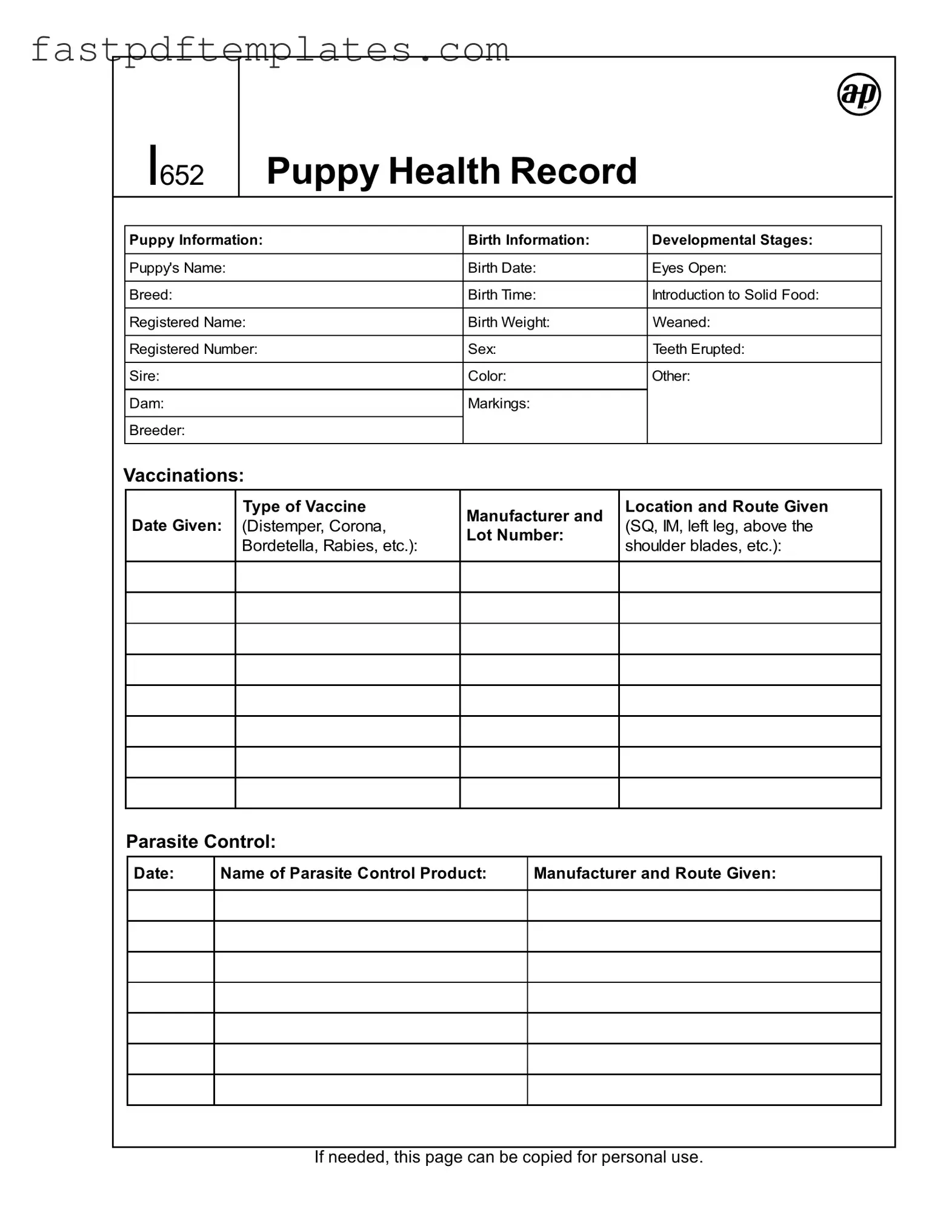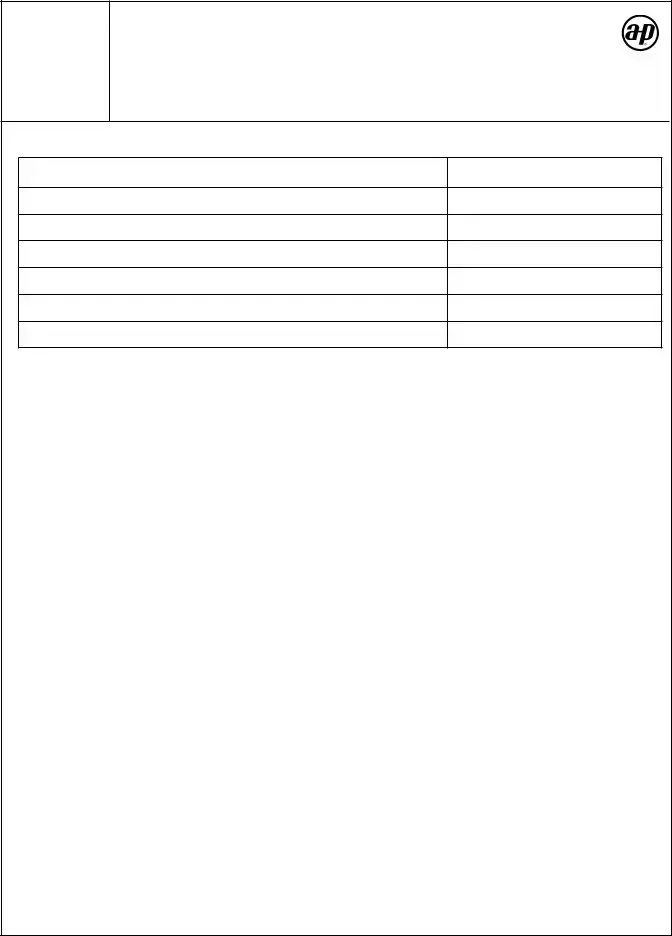The Puppy Health Record form shares similarities with a Pet Vaccination Record. Both documents serve as comprehensive logs for tracking a pet's vaccinations and health status. The Pet Vaccination Record typically includes sections for the pet's name, breed, and vaccination history, just like the Puppy Health Record. Each entry on both forms specifies the type of vaccine administered, the date it was given, and often the name of the veterinarian or clinic that performed the procedure. This ensures that pet owners have a clear and organized history of their pet’s immunizations, which can be crucial for future veterinary visits or travel requirements.
Another document akin to the Puppy Health Record is the Veterinary Treatment Record. This record details all medical treatments a pet has received, including examinations, surgeries, and medications. Similar to the Puppy Health Record, it includes dates and findings from veterinary visits. It may also document any procedures performed, such as spaying or neutering, which are outlined in the Puppy Health Record. Both documents serve to keep a thorough account of a pet's medical history, allowing for better-informed decisions regarding their ongoing care.
The Pet Adoption Record also bears resemblance to the Puppy Health Record. This document often includes information about the pet's background, such as birthdate, breed, and any known health issues. Like the Puppy Health Record, it may feature sections for vaccinations and medical treatments, ensuring that new pet owners are aware of their pet's health status upon adoption. This shared focus on critical health information assists in the transition of pets into new homes, promoting responsible pet ownership.
In addition, a Pet Wellness Plan is similar to the Puppy Health Record in that it outlines a pet's health management strategy over time. This document typically includes vaccination schedules, recommended treatments, and preventive care measures. Just as the Puppy Health Record tracks the timeline of vaccinations and health checks, a Pet Wellness Plan provides a roadmap for ongoing care, ensuring that pet owners are aware of when their pets need specific health interventions.
Lastly, the Breeder's Health Guarantee document can be compared to the Puppy Health Record. This document often includes health information about the puppy, such as vaccinations and any genetic testing results. Similar to the Puppy Health Record, it provides essential details that help new owners understand their puppy's health background. Both documents aim to ensure that the puppy is healthy and to provide owners with the necessary information to maintain their pet's well-being.


